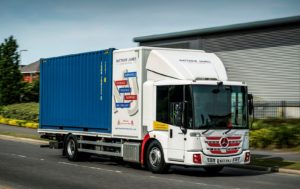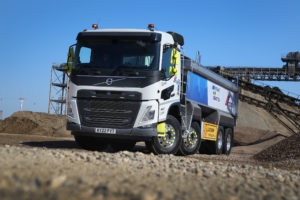A year on from its introduction to reduce blind spots, data shows Direct Vision Standard (DVS) has helped to support road safety in London.
In the first 12 months of enforcement, Transport for London (TfL) said it issued 191,769 safety permits under DVS, including nearly 5,000 to five-star vehicles with the highest levels of direct vision.
More than 112,000 zero-star HGVs have now had safe systems fitted, assisting drivers and improving protection for pedestrians, cyclists, e-scooterists and motorcyclists.

“We are delighted that nearly 200,000 permits have been issued and want to thank all of the freight operators who have led the way in ensuring they only operate the safest lorries in London and across the UK.”
TfL’s DVS scheme requires owners of HGVs weighing more than 12 tonnes to apply for a free safety permit that assigns vehicles a star rating based on how much the driver can see directly through their cab windows be able to drive in London.
HGVs rated to five stars receive their free safety permit automatically upon application, while operators of zero-star lorries in London are required to fit a variety of safe system equipment.
These include items such as high quality mirrors and side guards, cameras covering blind spots linked to an in-cab display, an audible warning when turning left, motion sensors covering the sides of the HGV at low speeds, and a prominent warning on the back of their vehicle.
Tideway, the company that is building the Thames Tideway Tunnel known as the Super Sewer, said hauliers working on the project have to use DVS-compliant vehicles.
Gordon Sutherland, Traffic & Road Logistics Manager at Tideway, said: “We were pro-active in recognising the risk to vulnerable road users associated with the project’s supply chain activity.
“Measures to address that risk included embedding a requirement for the fitting of indirect vision aids to HGVs in the contract documentation which has helped significantly in raising standards in the industry – but we can all do more through adoption of the DVS and helping to prove the concept that direct vision is best.”

HGVs below the three-star standard will need to be fitted with a progressive safe system that takes into account new and emerging technology or safety equipment that was not available during the design of the current safe system.
“We also urge any freight operators who haven’t yet applied for a safety permit to do so and continue making our streets safer for the increasing number of Londoners who walk and cycle in our city,” Calderato added.
In anticipation of the tightened standards, operators are already purchasing DVS compliant vehicles at three stars and above.
CEMEX recently added 10 new Volvo FM 460 8×4 tippers to its UK fleet – all DVS compliant – to deliver aggregates and sand to construction sites across the capital.
Enhanced safety features include a side-scan system, while visual alerts are displayed on the windscreen when an object moves into the vehicle’s danger zone.
The latest FM cab has raised A-pillars that give it up to one extra cubic metre of space and more light.
A large windscreen, low door line and modern mirrors ensures excellent all-round visibility which is improved further with an added lower window on the passenger door.
Nigel Ponton, National Fleet Engineer at CEMEX, said: “Safety is the number one focus whenever we add new trucks to our operation and these Volvos tick every box in that respect.
“The added visibility in the latest model FM cab is really impressive and so many of the safety features we require on our trucks were available as original equipment too, which was another important factor.
“These trucks will all be working in the busy streets across London so it’s imperative we provide the drivers with the best tools possible to do the job and help protect any vulnerable road users.”
Removal specialist Matthew James has also commissioned a low-entry 4×2 Mercedes-Benz Econic, with a single step and deep, panoramic windscreen, for work in and around London.

Its new truck, which attracts a maximum five-star DVS rating, is also fitted with a 360 degree camera system by Hall’s Electrical.
Matthew De-Machen, Managing Director at Matthew James, said: “Investment in this vehicle reflects our strong commitments to compliance and to safety, not only of colleagues, but also of other, vulnerable road users.
“It’s easy to make a compelling business case for operation of the Econic in and around London.”
The scheme’s average daily compliance is very high, with more than 94 per cent of HGVs in London now operating with a safety permit.
It is expected that the planned refinements to the scheme, alongside investment by freight operators in the latest trucks, will make HGVs across the capital even safer in the years to come.








